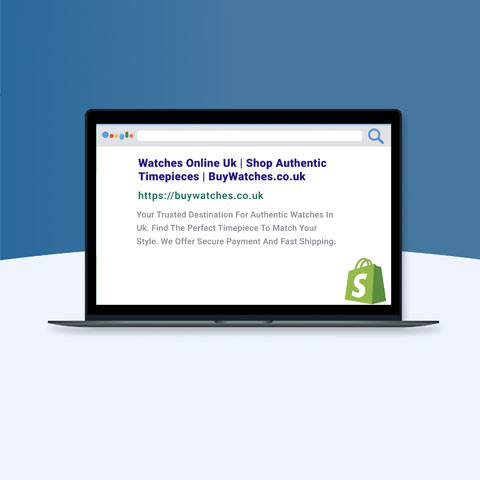The Future of Payments & Security

Looking to the future, the annual transaction value of online and mobile payments is predicted to hit $4.7 trillion by 2019 – almost double the $2.5 trillion figure of 2014 (Digital Payment Strategies: Online, Mobile & Contactless 2014-2019 Report by Juniper Research). No surprise then, that both retailers and payment providers are continuing to invest heavily to make payments easier, quicker and more secure.
In a world of competing retailers, payment partners, hardware and software it’s difficult to know where to focus. This whitepaper aims to make these decisions a little easier.
Get the downloadBelow is an excerpt of "The Future of Payments & Security". To get your free download, and unlimited access to the whole of bizibl.com, simply log in or join free. |

|
Taking payment for goods used to be such a simple affair that retailers gave it little thought – they took cash, cheque or card and their customer accepted time spent at the checkout as part of the everyday shopping experience.
When ecommerce came along, early payment systems were clunky and time consuming, but have evolved over time to offer more payment options and much improved customer experiences.
The continued growth of mobile commerce has already seen retailers and their payment partners investing heavily in mobile technologies - according to the World Payments Report 2014 from Capgemini and RBS, mPayment transactions are expected to grow by 60% this year, outpacing ePayment transactions, which were forecast to grow by 16% during the same period.
The evolution of payments
Taking payment for goods used to be such a simple affair that retailers gave it little thought – they took cash, cheque or card and their customer accepted time spent at the checkout as part of the everyday shopping experience.
When ecommerce came along, early payment systems were clunky and time consuming, but have evolved over time to offer more payment options and much improved customer experiences.
The continued growth of mobile commerce has already seen retailers and their payment partners investing heavily in mobile technologies - according to the World Payments Report 2014 from Capgemini and RBS, mPayment transactions are expected to grow by 60% this year, outpacing ePayment transactions, which were forecast to grow by 16% during the same period.
Looking to the future, the annual transaction value of online and mobile payments is predicted to hit $4.7 trillion by 2019 – almost double the $2.5 trillion figure of 2014 (Digital Payment Strategies: Online, Mobile & Contactless 2014-2019 Report by Juniper Research). No surprise then, that both retailers and payment providers are continuing to invest heavily to make payments easier, quicker and more secure.
In a world of competing retailers, payment partners, hardware and software it’s difficult to know where to focus. This whitepaper aims to make these decisions a little easier.
Payments are going mobile
While mobile payments have been around for some time now, they have been slow off the starting block in terms of consumer adoption. Many of the mobile payment options are based on near field communications (NFC) technology but, although embedded in many mobile devices for some time, only 2.5 million people with an NFC enabled device used it to make a payment in 2014. Deloitte, however, sees that number booming – predicting an average 30 million transactions per month this year, as mobile payments finally break into the mainstream and begin the march towards replacing cards - whether in-store or online.
Key mobile payment options
Apple Pay
The biggest introduction this year was the much-hyped Apple Pay. Good retailer adoption, an impressive line-up of international banking partners, and of course a strong marketing campaign ensured that user adoption was significant. This combined with the fact that Apple Pay could be accepted by any retailer that already had contactless payment terminals saw positive user sentiment, which brought physical mobile payments out of the shadows.
Android Pay
Although not available yet, Google’s Android Pay is being trialled now and will almost certainly be with us within 12 months. With Android’s massive market share, their payment solution will surely help physical mobile payments clear the final hurdles and land firmly in the mainstream. Based on similar technology to Apple Pay, Android pay will allow users of eligible Android devices to pay in android apps and in bricks-and-mortar stores.
Samsung Pay
Samsung has also got in on the act with its own mobile payment solution - Samsung Pay will launch in South Korea in late August, with beta testers in the US at the same time. The service is due for full launch in the US on September 28 with UK, Spain and China rolling out shortly afterwards. Unlike Apple Pay and Android Pay, the service doesn’t primarily use NFC technology (although it is supported) but instead focuses on Magnetic Secure Transmission (MST) - A tiny coil that sends out the same magnetic code that card terminal readers normally retrieve from a credit card. This allows for a wider range of physical use-cases, but does have security downsides.
Others
There are, of course, a plethora of other payment options available now, or in the pipeline. The majority of mainstream banks are noticeable by their absence from the sector, whilst in the UK, mobile operators are vying for a slice of the pie (both Vodafone and EE already experimenting). Surprisingly, PayPal has yet to deliver a physical payment solution, but this is surely in the works. Presently, no supplier offers a unified solution capable of handling payments, in-app, in-store and online, so this would seem to be the logical next step.
Why data security should be top-of-mind
Of course, with any payment system – new or established – there are always considerations around safety and security: Security breaches will directly impact the bottom line and consumer trust.
Failing to secure payment systems can not only cause a retailer financial pain but also damage reputation, lose customers, generate bad publicity and result in further losses through the imposition of industry fines on those businesses that haven’t taken the necessary precautions.
Wider adoption of Payment Card Industry Data Security Standard (PCI DSS)- a set of standards created by the five major international card issuers; (American Express, JCB, MasterCard, Visa and Discover) requires investment from retailers, but has already reduced risk and helped prevent data breaches.
Earlier this year, Worldpay reported that in the level 1 space of large corporates (those with more than 6 million transactions a year per card scheme), there has been a 179% increase in the number of companies achieving PCI DSS compliance in the UK.
At PCI level 3 however, (retailers with 20,000 to 1 million online transactions per year per card scheme), the picture is very different. There has been a 62% rise in compliance, but also a steady increase in Level 3 breaches between 2011 and 2013, although they did begin to fall in 2014.
There are initiatives helping reduce risk, including Point to Point Encryption (P2PE), tokenisation, multifactor authentication, card verification values, etc all play a part. Some of the biggest advances in payment security have been realised as a result of advances in wider encryption and advances in mobile processing capabilities which make it possible.
Smaller businesses in particular are more likely to use hosted payment solutions from payment partners like SagePay, Worldpay and PayPal to reduce their own payment security requirements. Indeed, Worldpay says that its data shows that 97% of data breaches occur in online businesses when they have chosen to process the payments themselves. It says that outsourcing payments is the single biggest improvement a business can make in payment security. Although the transaction cost for hosted payment solutions is often higher, unless the retailer has sufficient resource to dedicate to security, this can be a small price to pay.
The future of payments
We have already seen that the market has changed massively and is set for even greater change. As if that wasn’t enough, there are many other exciting payment technologies in the pipeline, which could further improve the payment experience for customers and subsequently benefit retailers.
Some notable examples include:
Facial Recognition
Facial recognition technology has been available for some time, with many mobile devices already featuring facial unlock capabilities. The UK Border Agency has introduced it as a key component of its ePassport gates. Whilst it is currently seen as a fairly low-security option due to the hardware available in mobile devices, Chinese ecommerce giant, Alibaba Group, is already experimenting with some success. Its affiliate business, Ant Financial, is developing the technology to use with the company’s Alipay online payment service and Alipay Wallet. Chairman, Jack Ma demonstrated the new feature at the CeBIT trade fair in Hanover, in March. American Express and MasterCard are also trialling facial recognition for low value transactions.
Facial recognition Fingerprint recognition
Whilst facial recognition may still be in the development stage, fingerprint recognition hardware is already present in millions of mobile devices - recent iterations of Samsung and Apple hardware feature fingerprint readers, and it is even an optional component of Apple Pay.
Wearables
Wearable technology also offers big opportunities for the payment industry. As we’ve already seen from Apple’s iWatch and initiatives such as American Express’ partnership with fitness band Jawbone, wearables offer the potential for radical change. In fact, as mobile payments break into the mainstream, retailers, banks and consumers are already looking to a future, where payments are decoupled from mobiles. Wristly research (https://goo.gl/LSRJzJ ) puts Apple Watch owners’ likelihood of using Apple Pay at a massive 80%
Voice Recognition and Retina Scanning
While less prevalent, some major payment solution providers are working on other biometric authorisation methods such as voice and retina scanning. Voice is currently less secure, as (of course) it can be spoofed with recordings, whilst retina scanning requires hardware improvements if it is to catch on. As providers work to overcome these problems, we will see new technologies emerging. No biometrics are completely infallible, as tolerances must be less than 100% for them to be usable - if users are forced to find exactly the right facial position or speak in exactly the same tone, verification processes can be painful and time consuming. With this in mind, multi-factor biometric authentication with a higher tolerance for inaccuracies will likely present a viable solution.
Conclusion
Whilst hype has surrounded mobile payments for some time, the events of 2015 – including the launch of ground-breaking new services and the increasing familiarity with contactless payment options in-store and growing customer frustration with antiquated and lengthy payment solutions online, means there is huge potential for change and huge opportunity for those retailers who ensure they are keeping abreast of such market trends.
Right now, it is imperative that retailers understand that customers’ payment experiences are as important as every other part of the customer journey. Desktop, mobile and physical payments will become homogeneous. Better experiences lead to happier customers; happier customers lead to profit.
Want more like this?
Want more like this?
Insight delivered to your inbox
Keep up to date with our free email. Hand picked whitepapers and posts from our blog, as well as exclusive videos and webinar invitations keep our Users one step ahead.
By clicking 'SIGN UP', you agree to our Terms of Use and Privacy Policy


By clicking 'SIGN UP', you agree to our Terms of Use and Privacy Policy






![[Research] Apps: The Secret Engine of Ecommerce Growth [Research] Apps: The Secret Engine of Ecommerce Growth](https://images.bizibl.com/sites/default/files/apps-and-web-similarweb-480.jpg)


